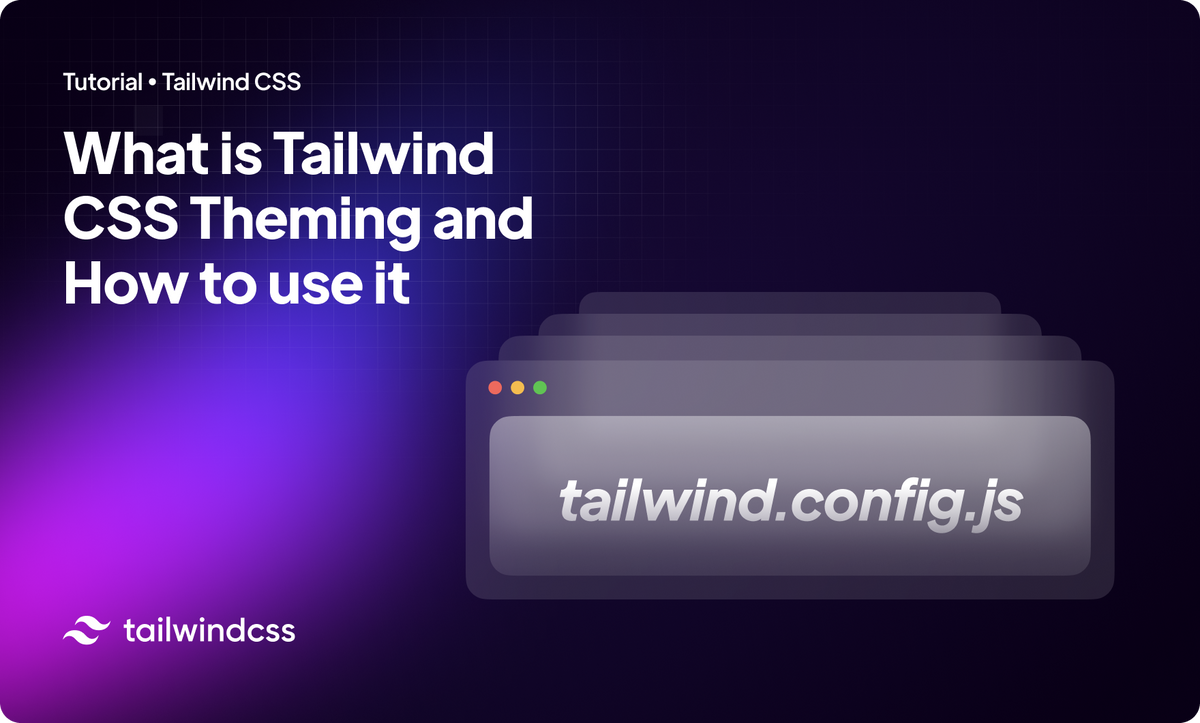What is Tailwind Theming and How to use it in 2023

Tailwind CSS is a popular utility-first CSS framework that allows developers to quickly and easily create responsive and customizable user interfaces. One of the key features of Tailwind is its ability to be easily themed, allowing developers to create custom designs that match the unique branding of their projects. In this article, we will explore the basics of Tailwind theming and how to use it effectively. So, let's get started!
What is Tailwind Theming?
Tailwind Theming is the process of customizing the default styles provided by Tailwind to create a unique design for your project. Tailwind provides a wide range of pre-built styles that can be customized to match your project’s branding. Theming in Tailwind involves creating custom color palettes, typography, spacing, and other design elements to match the unique needs of your project.
The default Tailwind styles are organized into various categories, such as typography, colors, spacing, and more. Each category contains a set of default values that can be customized to match your design needs. By changing these default values, you can create a custom design that is unique to your project.
How to Create a Custom Tailwind Theme
Creating a custom Tailwind theme involves a few key steps. Here is a basic overview of the process:
1. Define Your Design System
The first step in creating a custom Tailwind theme is to define your design system. A design system is a collection of guidelines and principles that define how your project will look and feel. This includes typography, colors, spacing, and other design elements.
When defining your design system, it’s important to consider the needs of your users, as well as the overall branding of your project. This will help you create a design that is both visually appealing and functional.
One great design system example is Horizon UI, an all inclusive Admin Template/ Framework which comes in a TailwindCSS as well, with its own respective theme configuration.
2. Customize Your Tailwind Configuration
The next step is to customize your Tailwind configuration. Tailwind provides a default configuration file (named tailwind.config.js ) that contains all of the default values for the various design elements. You can modify this file to create a custom configuration that matches your design system.
In the configuration file, you can modify the default values for colors, typography, spacing, and other design elements. For example, you can define a custom color palette that matches your project’s branding, or you can adjust the default spacing values to match the needs of your design.
For example, let’s add a new color to our tailwind.config.js file:
module.exports = {
theme: {
colors: () => ({
// We added here our new color named "Brand"
brand: {
50: "#E9E3FF",
100: "#C0B8FE",
200: "#A195FD",
300: "#8171FC",
400: "#7551FF",
500: "#422AFB",
600: "#3311DB",
700: "#2111A5",
800: "#190793",
900: "#11047A",
},
}),
},
};
3. Use Your Custom Theme
Once you have customized your Tailwind configuration, you can start using your custom theme in your project. This involves using the custom classes and utilities provided by Tailwind to apply your custom styles.
For example, you can use the custom color classes you defined in your configuration file to apply your custom colors to various elements in your project. Similarly, you can use the custom typography classes to apply your custom fonts and font sizes.
Now, let’s customize a button background with our newly added color:
<button class="bg-brand-500">
My awesome button
</button>

Tips for Effective Tailwind Theming
Here are a few tips to help you create an effective Tailwind theme:
- Keep your design system simple and consistent. Avoid using too many colors or font styles, as this can make your design feel cluttered and confusing.
- Use typography to create a hierarchy. Use font sizes and weights to create a clear visual hierarchy for your content.
Conclusion
Tailwind Theming is a powerful feature that allows developers to create custom designs that match the branding of their projects. By customizing the default styles provided by Tailwind, developers can create unique and functional designs that are visually appealing and easy to use. Whether you are working on a small project or a large-scale application, Tailwind Theming can help you create a design that is tailored to your needs.
Use "blog10" at the checkout for a 10% special discount at Horizon UI PRO - Learn more
